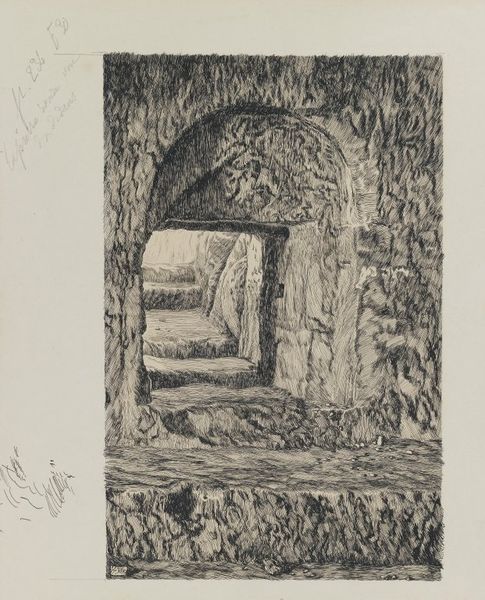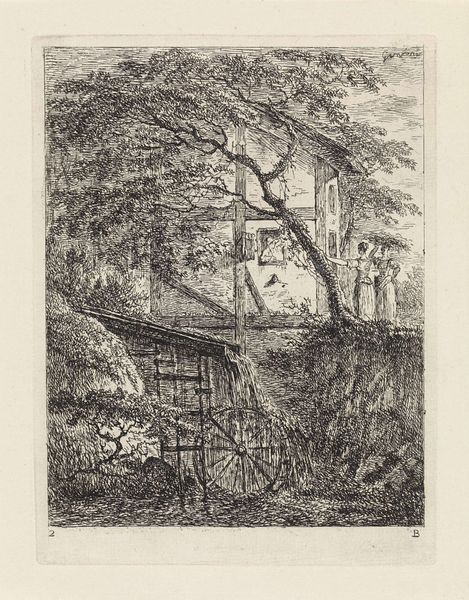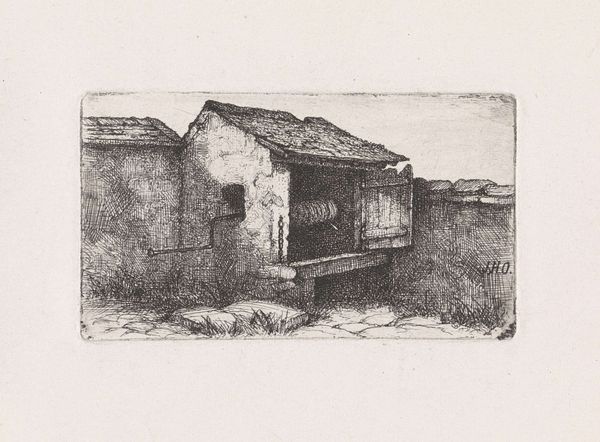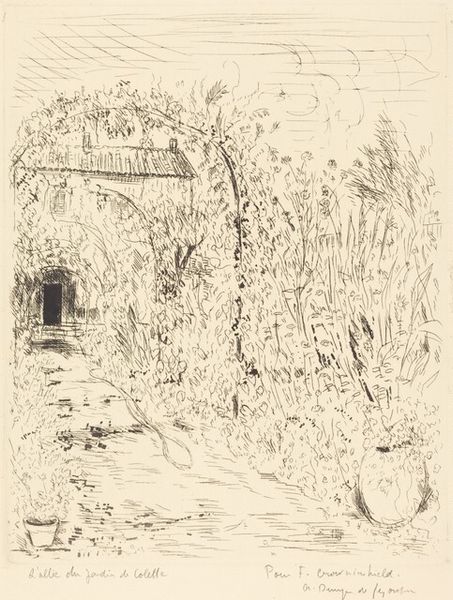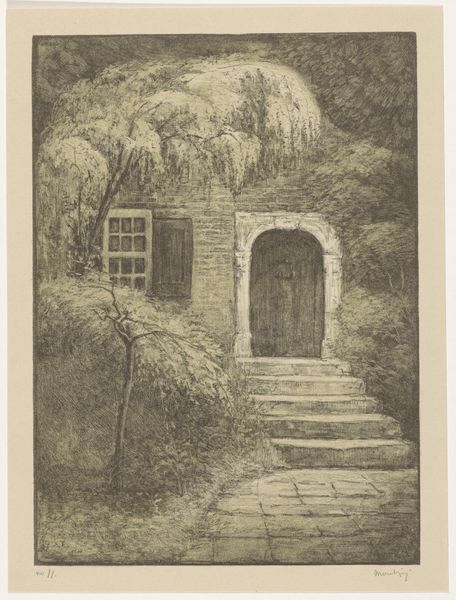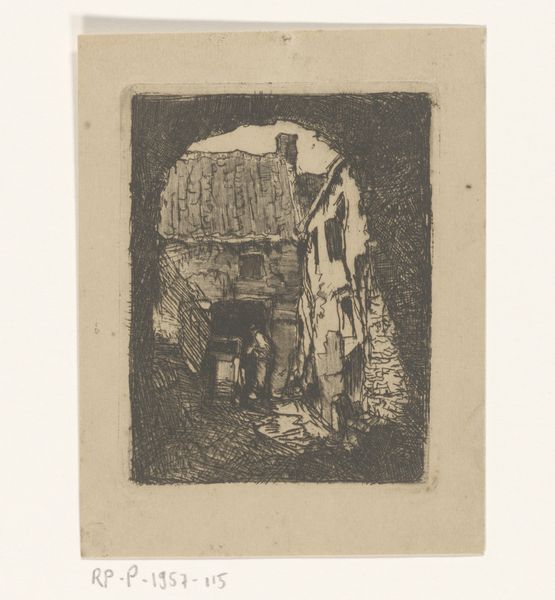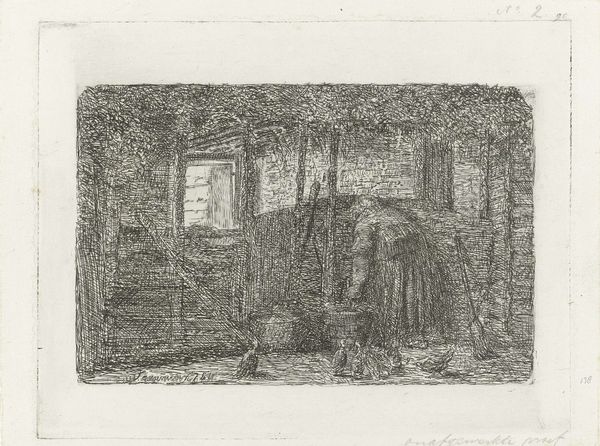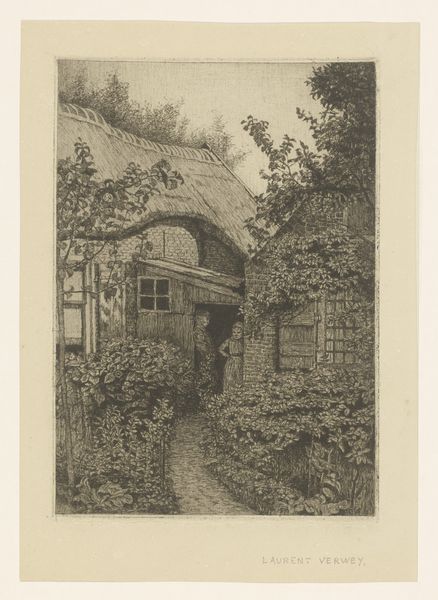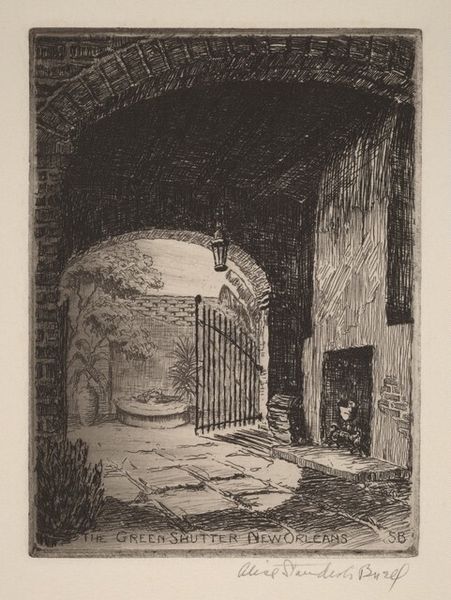
etching
#
etching
#
dog
#
landscape
#
plant
#
genre-painting
#
realism
Dimensions: height 292 mm, width 216 mm
Copyright: Rijks Museum: Open Domain
Curator: We're looking at "Facade of a House," an etching by Jacobus Ludovicus Cornet, dating roughly between 1825 and 1882. It’s currently held in the collection of the Rijksmuseum. Editor: My first impression is one of intimate quietude. The meticulously rendered textures, especially the aging brickwork and verdant overgrowth, contribute to a sense of serene decay. It’s incredibly detailed! Curator: Indeed. Consider how Cornet manipulates line weight to establish depth. Note, too, the architectural construction, a deliberate juxtaposition of formal elements like the windows against the more vernacular qualities in the structure surrounding the cellar door, and how he renders them uniformly in the same textural mode. It challenges our traditional views of domestic and formal portraiture by examining everyday life in such high detail. Editor: The artist really invites us to ponder about what is behind the exterior—materials suggest the conditions in which people lived. Take that barrel in the bottom-right corner—it speaks volumes about their storage techniques and likely contained their food. It suggests self-reliance, and perhaps even scarcity, in that era. Curator: The dog at the cellar door. Interesting… in structural terms, it offers an excellent visual anchor, establishing the composition's ground and providing a focal counterpoint to the window boxes above. In addition, one has to wonder: What significance did animals hold for the inhabitants? Were they merely utilitarian companions, or did they symbolize deeper emotional bonds? Editor: It is curious how it's patiently awaiting. The print’s materiality and labor reflect the lives represented—it took careful planning, skilled hand-craftsmanship, and physical effort to render these ordinary scenes so accurately and create multiples. Each impression carries not just an image, but traces of production, circulating an idealised vision of ordinary Dutch homes. Curator: I concur. The careful composition subtly directs our attention through a rigorous, intellectual viewing experience while giving nods to familiar themes in portraiture. Editor: Exactly. And by focusing on the tangible aspects, it lets us to imagine those of a simpler time. The value in rendering this piece is found both within the craft itself and also in understanding its social conditions.
Comments
No comments
Be the first to comment and join the conversation on the ultimate creative platform.
